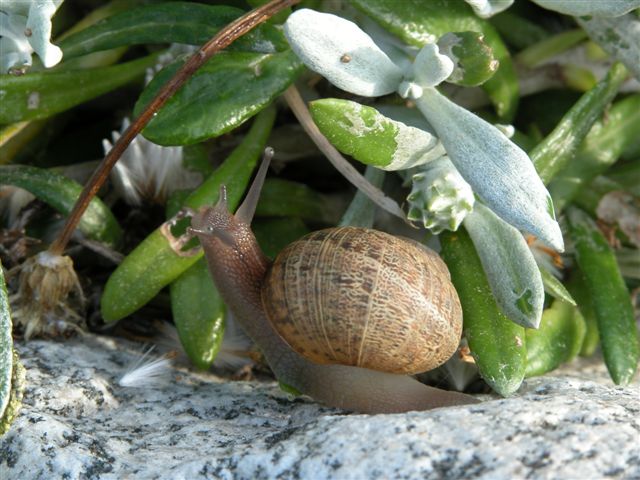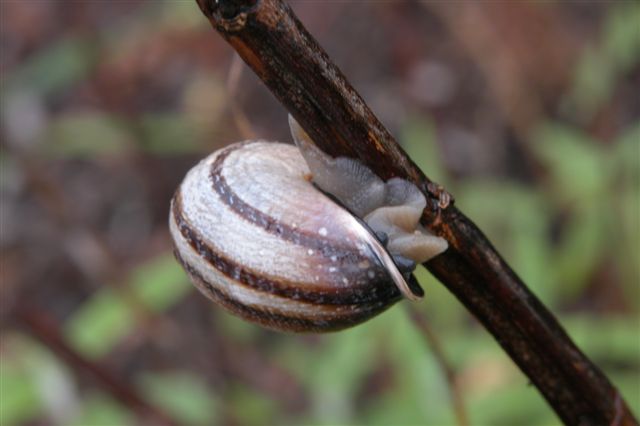Controlling Snails


There are two predominant varieties of snails in Ladera Heights: the Brown Garden Snail, Helix aspersa (above left), and the Banded Wood Snail, cepaea nemoralis (above right). I am not certain of my identification of the above, so please let me know if I am right or wrong by sending email to info@laderaheaights.info.
The brown garden snail was introduced to California in the 1850s when it was imported for escargo, but it got loose and rapidly invaded the rest of California and is now a major agricultural nuisance. Even though the species is used as food, do not eat the snails you find in your yard since they have been accumulating pesticides and other chemicals and are not fit for consumption.
The snails found in Ladera Heights can live up to nine years. They take from one year to two years to mature before they lay eggs, and once mature can lay between 30 and 120 eggs monthly during warm weather (e.g. March through November), but may be less active during the hot dry summer months. The eggs take roughly two weeks to hatch. Snails are nocturnal, coming out to eat primarily at night, but you will find them also on rainy days and damp mornings when the Marine layer brings in fog and drizzle.
There are several approaches to controlling snails. These include hand picking the snails, trapping them, and using pesticides. I will discuss each of these approaches.
Hand Picking
Hand picking the snails can be effective, but you will have to do this regularly over a long period of time. They can be killed by drowning them in a pail of soapy water. During the time that the Snails are active, usually only 5% to 10% of the snail population will be above ground, with the majority of snails unreachable. This is why, if you pick up the snails and discard them one day, you will find almost as many snails the next day.Use of chemicals
The most common chemical used to control snails and slugs is metaldehyde. This is the active ingredient in most molluscides including Cory's Slug and Snail Death and and Buggetta. Unfortunately, metaldehyde is highly toxic to other animals, including dogs and cats, and dogs especially are attracted to the bait (the inactive ingredient that attracts the Snails). If you have pets, and even if you don't, you should avoid using metaldehyde because of its secondary affect on other wildlife.
A much safer chemical solution to snails is iron phosphate. Iron
phosphate occurs naturally, but when consumed by snails, they stop
eating, and eventually die. As soon as they stop eating, they stop
causing damage to your landscape. To use Iron phosphate you will need
a baited version (i.e. mixed with something that will attract the
snails and cause them to eat it). You can find baited iron phosphate
in products such as Escar-Go! from
Gardens Alive!.
The typical cost to treat with Bugetta (at $14 for 4 pounds) is $0.80 per 1,000 square feet treated, and it must be reapplied every four weeks. For Cory's Slug and Snail Death (at $20 for 18 pounds) the cost works out to about $0.55 per 1,000 square feet and must be reapplied every two weeks. The non-toxic Escar-go (at $26 for 5.5 pounds) works out to $4.72 per 1,000 square feet and must be reapplied every two weeks.